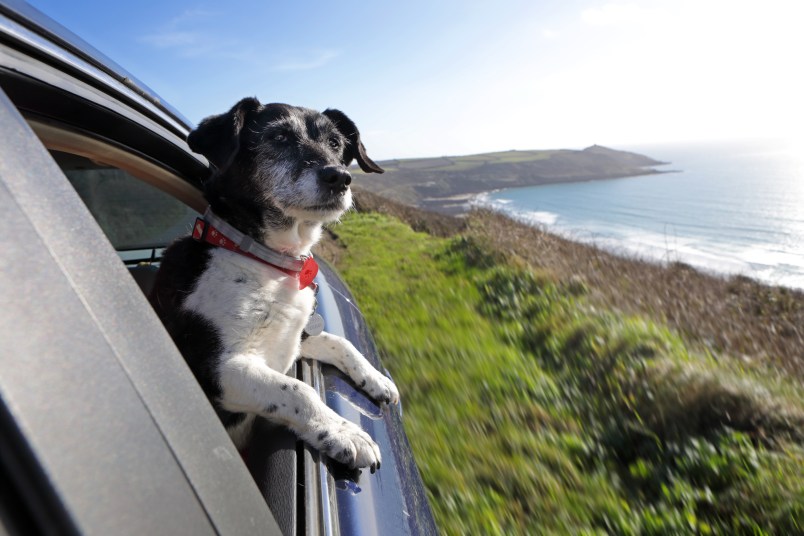How to Prepare for a Road Trip With Your Dog

The car’s packed, the route is planned, and the pet-friendly accommodation has been booked, but what other special preparations have to be made for taking the family dog along on your vacation? Nobody wants drama on vacations, so embarking on a long car journey with your four-legged friend may require some serious thought.
Make sure your dog is acclimated.
Some dogs can’t wait to jump in and get going, but for others, it can be a bit traumatic. Pre-trip acclimatizing may be necessary for novice canine travelers. “If your dog hasn’t traveled in the car before, it’s best to test them out with some short journeys first,” says Liisa Ahlstrom, technical services veterinarian at Bayer. “Even letting them start by sitting in a stationary car, then praising them and giving them a little treat will help get them used to it.
Make sure your dog is secured.
“Once a dog has become accustomed to the car, you need to make sure they’ll be just as safe as the human passengers. A harness that wraps around your dog’s chest and clips onto the rear seatbelt, to prevent them sliding off in a sudden stop, is an excellent idea.
Other handy products include expandable lattice screens that can be fitted into an open window and let plenty of fresh air in while still preventing an excitable pooch from trying to jump out the window; barriers that fit between the front seats to stop dogs trying to climb through from the rear; and spill-proof water bowls so they can keep themselves hydrated between stops.
Take Breaks.
Once you hit the road, your dog will need breaks in the journey at least as often as you do. “You need to stop at least every 90 minutes to two hours to let them out for water, food, a toilet break, and a quick walk around,” says Ahlstrom. “More frequently if it’s an especially hot day.
Flea protection is a must.
“Even if your dog doesn’t normally wear a flea and tick collar, traveling to the unfamiliar territory where ticks may potentially be encountered make these a must-have vacation accessory. “With the collars, the active ingredient is disseminated through the oils in their fur and skin, so they’re not getting drugs into their bloodstream,” says Ahlstrom. “The collars only take a short while to begin providing protection, so I’d recommend you get the collar on them two days before you leave.”
Locate your nearest vet.
Another good idea is to look up a number for a vet in the area you’ll be visiting, just in case there’s an emergency. Also, make sure that you have your phone details up to date and matching those on your dog’s microchip, so you can be contacted on your phone if they go missing.”
This article originally appeared on our sister site, Homes to Love.













